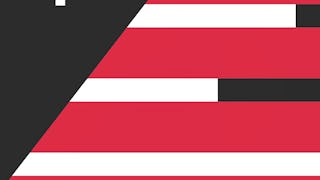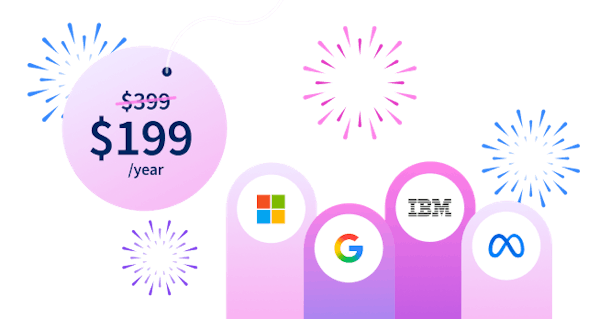In this course, you’ll be introduced to the world of Information Technology, or IT. You’ll learn about the different facets of Information Technology, like computer hardware, the Internet, computer software, troubleshooting, and customer service. This course covers a wide variety of topics in IT that are designed to give you an overview of what’s to come in this certificate program.

Enjoy unlimited growth with a year of Coursera Plus for $199 (regularly $399). Save now.

Technical Support Fundamentals
This course is part of Google IT Support Professional Certificate

Instructor: Google Career Certificates
2,206,089 already enrolled
Included with
(162,933 reviews)
Skills you'll gain
Details to know

Add to your LinkedIn profile
See how employees at top companies are mastering in-demand skills

Build your Support and Operations expertise
- Learn new concepts from industry experts
- Gain a foundational understanding of a subject or tool
- Develop job-relevant skills with hands-on projects
- Earn a shareable career certificate from Google

There are 6 modules in this course
In the first module of the course, we'll learn about how computers were invented, how they've evolved over time, and how they work today. We will also learn about what an "IT Support Specialist" is and what they do in their job. By the end of this module, you will know how to count like a computer using binary and understand why these calculations are so powerful for society. So let's get started!
What's included
15 videos5 readings5 assignments1 plugin
In the second module of this course, we'll learn about what's inside a computer. We'll learn all about the hardware components or different pieces inside a computer. We'll discover what each component does and how they work together to make a computer function. By the end of this module, you will also know how to build a computer from scratch!
What's included
19 videos9 readings5 assignments1 plugin
In the third module of this course, learners will explore operating systems (OS). They will learn about the common operating systems that are used today and understand how they work with the computer hardware. Learners will review the "boot process" of an operating system and show learners how to install Windows, Linux, and Mac OSX operating systems. Finally, learners will use the hands-on lab environment to interact directly with the Windows and Linux operating systems.
What's included
19 videos9 readings3 assignments2 app items
In the fourth module of this course, we'll learn about computer networking. We'll explore the history of the Internet and what "The Web" actually is. We'll also discuss topics like Internet privacy, security, and what the future of the Internet may look like. You'll also understand why the Internet has limitations even today. By the end of this module, you will know how the Internet works and recognize both the positive and negative impacts the Internet has had on the world.
What's included
15 videos2 readings2 assignments
In the fifth module of this course, we'll learn about computer software. We'll learn about what software actually is and the different types of software you may encounter as an IT Support Specialist. We'll also explore how to manage software and revisit the concept of "abstraction." By the end of this module, you'll use the Qwiklabs environment to install, update and remove software on both Windows and Linux operating systems.
What's included
10 videos5 readings3 assignments2 app items
Congratulations, you've made it to the last module of the course! In the final module, learners examine the importance of troubleshooting and customer support. They’ll go through some real-world scenarios that they might encounter in a Help Desk or Desktop Support role. They’ll also learn why empathizing with users is critical when working in a tech role. Finally, learners will learn why writing effective documentation is an important aspect of any IT role. By the end of this module, learners will be able to utilize soft skills and write documentation in order to communicate effectively with others.
What's included
23 videos5 readings2 assignments
Earn a career certificate
Add this credential to your LinkedIn profile, resume, or CV. Share it on social media and in your performance review.
Instructor

Offered by
Explore more from Support and Operations
 Status: Free Trial
Status: Free Trial Status: Free Trial
Status: Free Trial Status: Free Trial
Status: Free Trial Status: Free Trial
Status: Free TrialMicrosoft
Why people choose Coursera for their career




Learner reviews
162,933 reviews
- 5 stars
85.68%
- 4 stars
12.24%
- 3 stars
1.45%
- 2 stars
0.25%
- 1 star
0.35%
Showing 3 of 162933
Reviewed on May 12, 2020
Very enjoyable forums, videos, and interaction as a whole. I have taken similar classes in the past but the way that this course works makes it so much easier for me to be interested and stay focused.
Reviewed on Jan 8, 2020
I recommend this course to everybody that is looking into starting a career in IT Support IndustriesAlso for Experienced IT Support Specialist in order to gain additional knowledge and useful skills
Reviewed on Feb 24, 2023
I recommend this course for everyone who is a beginner in computing. it's easy to understand and you will learn a lot of things especially to those who never had the experience to computing. Enjoy!
Frequently asked questions
To access the course materials, assignments and to earn a Certificate, you will need to purchase the Certificate experience when you enroll in a course. You can try a Free Trial instead, or apply for Financial Aid. The course may offer 'Full Course, No Certificate' instead. This option lets you see all course materials, submit required assessments, and get a final grade. This also means that you will not be able to purchase a Certificate experience.
When you enroll in the course, you get access to all of the courses in the Certificate, and you earn a certificate when you complete the work. Your electronic Certificate will be added to your Accomplishments page - from there, you can print your Certificate or add it to your LinkedIn profile.
More questions
Financial aid available,
¹ Some assignments in this course are AI-graded. For these assignments, your data will be used in accordance with Coursera's Privacy Notice.





